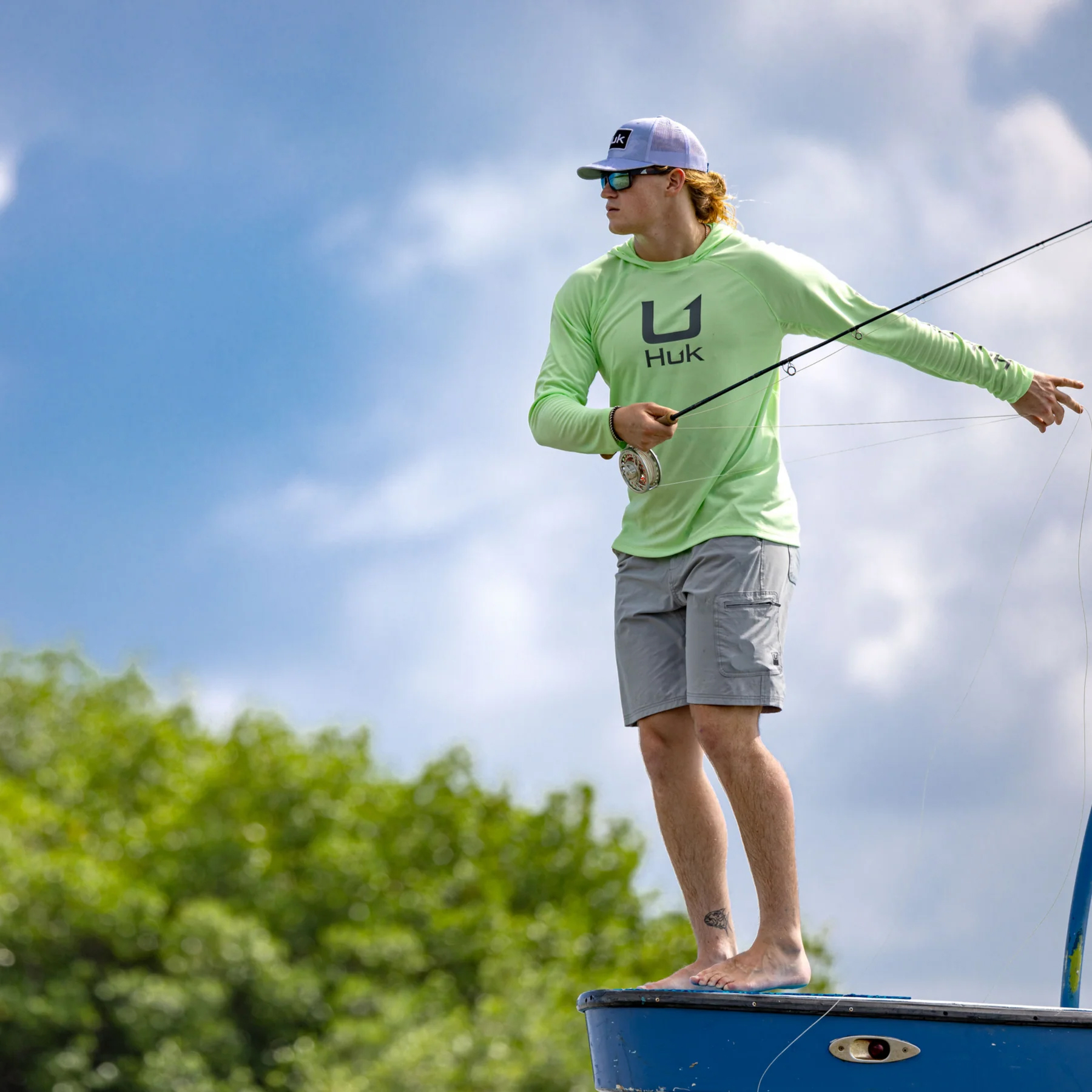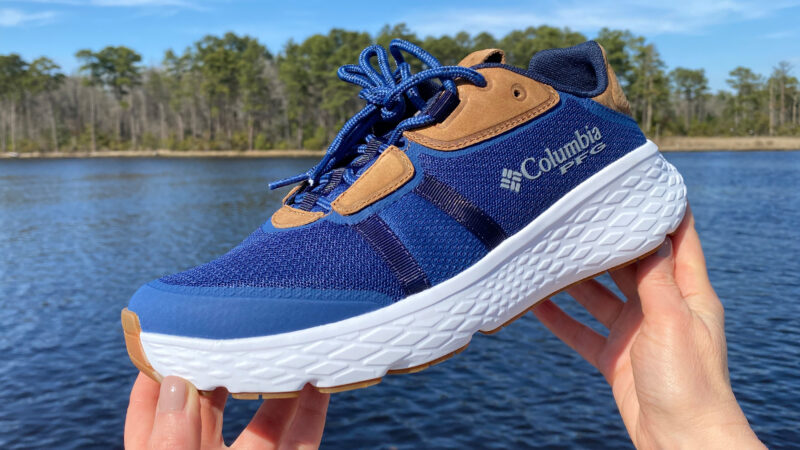UPF vs SPF: What’s the Difference and How Much Sun Protection Do You Need?
We may earn revenue from the products available on this page and participate in affiliate programs. Learn More ›
In recent years, there has been a marked increase in the amount of clothing that’s rated for UPF-protection. The numbers most commonly used — UPF 30 and UPF 50 — look awfully similar to what we’re used to seeing on sunscreens, but do you really need UPF 50 clothing if you wear SPF 50 sunscreen? What’s the real difference between UPF vs SPF?
While the terms refer to very different measurement systems, the scales are pretty similar. If you need SPF 50 for your exposed skin, purchasing UPF 50 clothing is probably a safe bet. Here’s what you else you need to know to avoid getting burned.
What Is SPF?
SPF stands for Sun Protection Factor and is a relative measurement of how much a cream or spray slows down the rate at which you burn. The number signifies a 10X factor. So if you typically start to burn within 10 minutes with exposed skin in direct sunlight, with SPF 30 sunscreen you will start burning in 300 minutes (5 hours). With SPF 80, it would take 800 minutes (over 13 hours).
There is a test used to determine a product’s SPF rating: ISO 24443:2021 (in the U.S.) and ISO 24444:2019 (much of the rest of the world), that often involves actual people. In this test, volunteers across a variety of skin tones have small dabs of sunscreen applied to their backs. Technicians at third-party labs then shine a light that approximates Ultraviolet B (UVB) rays onto the spot on their backs where the sunscreen was applied to see how long it takes for a sunburn to develop. There is also a separate water resistance test, where the human subjects hang out in a spa bath. Then they get out at regular intervals and have their skin tested to see if it’s still providing ultraviolet protection.
However, sunscreens that bill themselves as “broad spectrum” must also pass a different test to assess how well they block Ultraviolet A (UVA) rays. (More below on the differences between these two different kinds of light.) In this second test, sunscreen is smeared on a PMMA plate. Then, a light is shone on it to see how much light passes through. If the ratio of light that is blocked is comparable to the UVB protection the sunscreen provides, it can be labeled “broad spectrum.”
While this second test, using the PMMA plate and fixed light, is reasonably objective, it’s worth noting that the test of the UVB rays is more subjective. Slight differences in skin tone can have an outsized effect, as can the subjective readings of the individuals conducting the test. When follow-up studies have been conducted on existing SPF labels, they often find that the level of SPF protection provided is less than what has been advertised. And, in reality, most people use less sunscreen on their bodies than is recommended (about an ounce).
What Is UPF?

HUK
UPF stands for Ultraviolet Protection Factor and is a measure of how much ultraviolet light a piece of fabric blocks out. The math isn’t quite as clean here. An article of clothing rated to UPF 15 would block out 93.3% of the ultraviolet light, while an article of clothing rated to UPF 50 would block out 98%. A typical cotton T-shirt has a UPF of 5, which would block 80% of ultraviolet light. This includes both UVA and UVB.
Clothing that sports a UPF label has been tested in a laboratory to ensure that the weave is tight enough to match this specification. The test for this is ASTM D6544 with the labeling determined by the standards in ASTM D6603. In this test, a garment is laundered 40 times and then exposed to simulated sunlight to measure how much is blocked. Swim apparel is also subjected to chlorinated water.
Understanding UVA vs UVB
There are two types of UV light to know about: UVA and UVB. The UV light most people are familiar with is UVB, otherwise known as “burning rays.” In addition to causing painful sunburns, this is also the bigger driver of skin cell mutations that lead to skin cancer. UVB is also what your body uses to create Vitamin D. UVB rays make up only 5% of the UV on earth.
UVA, the “aging rays,” have a longer wavelength and so can penetrate deeper into the skin. Although they are not as significant a contributor to skin cancer as UVB, there is still a correlation. Unlike UVB, UVA can penetrate fog, clouds, and glass. UVA rays may help produce nitric oxide, which is important for heart health.
How to Determine What SPF and UPF Rating You Need
The FDA recommends that people wear sunscreen with SPF 15 protection while the American Academy of Dermatology recommends SPF 30. The discrepancy between these two numbers is in large part due to just how many variables go into sun exposure. There’s weather — sunny days result in a lot more UVB exposure than cloudy ones. There’s also atmosphere: the longer the distance that UVB rays have to travel through the earth’s atmosphere, the more of them are absorbed. (UVA rays are not absorbed at as significant a rate.) So when the sun is low on the horizon, either because it’s winter or because it’s early in the day, UVB rays have to travel through a significant amount of atmosphere to reach you. When the sun is directly overhead at noon during the height of summer, it has to travel through a lot less atmosphere to reach you. This is also why you are more likely to be sunburned at higher elevations (where there is less atmosphere) than lower elevations. If you need help cutting down some of these variables, the EPA has a handy search tool that will provide a relative sense of UV levels for your zip code.
The other variable is you: the melanin in your skin, how long you spend out of doors, how much sunscreen you apply, and how often you reapply it. Because, again, it’s hard to account for exactly how long people will be out of doors for and what they will do, the recommendations tend to be fairly conservative: even for people with darker skin the recommendation starts at SPF 30 and then goes up to SPF 50 for people with lighter skin who burn very easily.
If you spend only a little time out of doors each day, however, there may be times when you want to forgo sunscreen. As mentioned above, UVB rays are essential for the production of Vitamin D, of which 35 percent of Americans are deficient. Low levels of Vitamin D are associated with a range of health issues, including rickets, low bone density, and high blood pressure. So while it’s important to cover with appropriate levels of UPF-rated clothing and SPF sunscreens in the summer months, be mindful during the times of the year when there is less sunshine available to not overdo it.
Final Thoughts on UPF vs SPF
If you’ve been wondering how much you need to understand about the differences between SPF and UPF, the answer is: not much. If you have especially fair skin — where there is a risk of burning through your clothing with even moderate amounts of sun exposure — then upgrading to a UPF-rated sun shirt or pants is a smart bet. Same goes if you are regularly exposed to hours of sunshine in parts of the country with the highest levels of UV radiation. But for the rest of us, following the typical recommendation to cover up and use SPF 30 or higher sunscreen on exposed parts of your skin will do you just fine.
The post UPF vs SPF: What’s the Difference and How Much Sun Protection Do You Need? appeared first on Outdoor Life.




